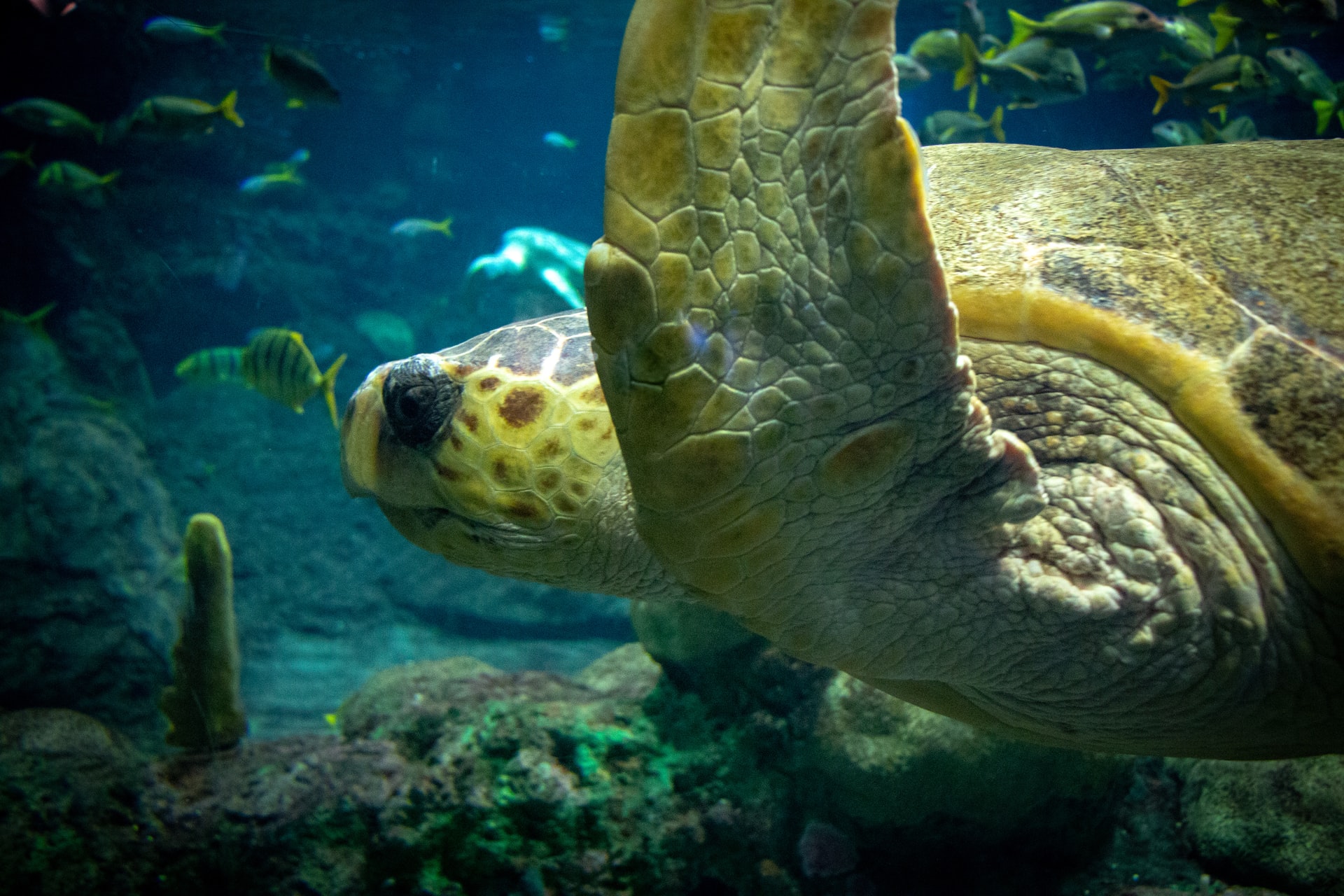
After several decades of protection and monitoring, the endangered green turtle is making a comeback to the Seychelles’ Aldabra Atoll. More than 15,000 annual clutches are now appearing, up from 3,000 in the 1960s.
Endangered green turtle numbers up sixfold in Seychelles
A new study shows that after half a century of protection, green turtle numbers have only continued to climb in the Seychelles’ Aldabra Atoll. Published in Endangered Species Research, the study found that the annual number of green turtle clutches increased from the 2,000 to 3,000 range in the late 1960s, to more than 15,000 in the late 2010s—a sixfold increase.


reason for hope for the world’s largest green turtle population
Green turtles, the only herbivore and one of the largest among sea turtles, nest in more than 80 countries and live in coastal areas throughout the world. Their populations have suffered drastic declines historically as a result of human exploitation for their fat, meat, and eggs. Today, the global population of the endangered species is still in decline.
But in Aldabra, home to one of the world’s largest green turtle populations, there is reason for hope. The population on this coral atoll still has plenty of room to grow, lead author Adam Pritchard from the University of Exeter told Popular Science.
Based on the number of clutches, he estimates that there are about 3,000 to 5,000 female green turtles nesting on Aldabra today. However, records from the early 1900s show that as many as 12,000 turtles were allowed to be taken from Aldabra each year, he says, suggesting that the nesting population then was even higher.
“The fact that we’re at around 3,000 to 5,000 now, which is already so much more than there were in the 1960s, implies that there’s potential for this population to double, triple—we’re not even sure,” Pritchard says. “This could just be the start. It’s amazing that, after slower growth at the beginning, there’s been this real explosion in recent years.”


long-term data is crucial since conservation work will not show instant results
The success of green turtle conservation in Aldabra is a testament to the importance of long-term protection. The turtles seem to have not only benefited from the hunting ban in 1968, but also Aldabra’s designation as a UNESCO Heritage Site in 1982. Located in the Indian Ocean off East Africa, Aldabra is a coral atoll that is part of the Seychelles, an archipelago of 115 islands. The remoteness and inaccessibility of Aldabra has allowed it to remain largely untouched by humans for the majority of its existence.
“It could’ve gone the other way so easily if people had made some other decision to not protect Aldabra,” says co-author Cheryl Sanchez from the Seychelles Island Foundation (SIF). “That would’ve been it, if it weren’t for people’s foresight and these incredible Seychellois leaders who are proud of their natural resources and want to protect them.”
What’s equally important is the dedication and patience required to sustain long-term monitoring. For a species like the green turtle, which takes at least 20 to 50 years to reach sexual maturity and reproduce, long-term data is crucial since conservation work will not show instant results. If it weren’t for the hundreds of people who gathered decades of data across Aldabra’s more than 50 beaches, it would have been difficult to track the progress made in turtle conservation, Pritchard says.
Source: PopularScience


There is much to learn from Aldabra
After realising that Aldabra’s turtle would cease to exist if nothing was done, the Seychelles government made the decision to ban turtle hunting in 1968 and start protecting the endangered species. Instead of killing a turtle to sell its body parts, the country could now use the species to attract tourism, a much more sustainable and low-impact source of profit.
The annual team of less than 20 people on Aldabra monitor not just sea turtles, but also giant tortoises, frigatebirds, rainfall, and more. Sanchez, who has contributed to SIF’s work on Aldabra, emphasises the amount of effort that goes into the data collection process.
The small team visits sites all over the massive atoll by boat, while navigating extreme tides and rough weather. The fact that people have maintained this monitoring program for so long is astounding, Sanchez says, and sets an example for what can be done elsewhere if it can be done in an environment as tough as Aldabra.
There’s also much to learn from Aldabra in terms of how to successfully restore a turtle population. Aldabra’s green turtle restoration is not the only win for the species in recent years. Similar recoveries have been recorded in the US, Costa Rica, and Ascension Island to name a few. And in each of these cases, a common message rings clear: If we protect the beaches, the turtles can handle the rest. They will recover.
Source: PopularScience

ADOPT A GREEN TURTLE WITH WWF
Donate to WWF in support of our global conservation work and send an optional Green Turtle themed email certificate to your designated recipient. There are a range of different options, adoption kits, gift certificates and Turtle-related goodies to choose from.